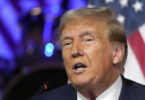Few days back, the Trump administration has declassified a report which briefly described the US Indo-Pacific strategy, which was followed by US administration after 2015 and it will be right to say that it is still being implemented by the US government in many spheres. The report specifically shed light on US policy’s pivots including “accelerating India’s rise,” blocking China from establishing “illiberal spheres of influence,” and maintaining “U.S. strategic primacy” in the region.
The main target of the United States Indo-Pacific Strategy was China and in second fold, its aimed at North Korea. The strategy emphasizes countering China’s growing influence in the region and beyond including Middle East, Central Asia and Africa. US Strategy calls on seeking strategic alignment with its allies and partners in the region for implementation of US strategic plans against Chinese interests and influence. India was chosen as counterweight to China and it has been supported with a major collaboration in military domain by providing latest weaponry, initiation of bilateral and quad lateral joint military exercises, bilateral defense agreements such as Basic Exchange and Cooperation Agreement (BECA), Logistics Exchange Memorandum of Agreement (LEMOA) and Communications Compatibility and Security Agreement (COMCASA) to strengthen Indian military capabilities. These agreements provided open access to India to latest real time intelligence sharing, secure communication Channel and geo-spatial information of US military. At diplomatic front US provide diplomatic support to India at international forums.
The strategy further revealed that how US acted to punch on growing Chinese trade and economic collaboration with the less developed African and Asian economies by projecting China’s industrial and trade policies as unfair and damaging the global trading system. By doing so, US started targeting Chines technological Giants (Alibaba, Tencent -owned We Chatt, China Telecom, China Mobile Huawei, Baidu and Tik Tok- owned by Byte Dance) by imposing sanctions against them. Similarly, US sanctioned the Chinese commercial firms linked with Chinese military during recent weeks.
At domestic front, US strategy aims at expanding U.S. counter-intelligence and law enforcement to counter China’s intelligence activities in the U.S. and expanding intelligence sharing with allies to help them do the same. At treasury level, the strategy calls for national security reviews of Chinese investments into sensitive U.S. sectors, by abiding that US started banning Chinese companies to invest in American stock exchanges and in other fiscal ventures such as Social Sectors etc.
Another US Indo-Pacific strategy objective calls for developing military and asymmetric warfare strategies to help Taiwan in its long-standing, tense relationship with China. So here we experienced that America has cleared the sale deal of latest military hardware including Mobility Artillery Rocket System, over-the-horizon, precision strike missiles and 66 new F-16 fighter jets to Taiwan in 2020. US continuously engaged in high level official visits to Taiwan and tried to make Taiwan board on UNO (Taiwan is not UNO members and considered a part of China as per UN resolution) in any capacity to malign China at international level during last one year. Therefore, apparently, one observed that all these were being done to pursue the policy objectives of US Indo-Pacific strategy.
At Politico-Strategic front, USA formed the quad lateral alliance with India, Australia and Japan to Barricade the China. It also renamed US Pacific Command as Indo-Pacific Command to specify its area of responsibility up-to Indo-Pacific region. US is also working with allies and partners to prevent Chinese acquisition of military and strategic capabilities.
United States is using all these arrangements against North Korea too, because most of its partners look North Korea as threat to them. These declassified documents clearly indicate the US policies in the region and we observe that this policy is currently in the implementation phase and time will decide how much United States achieve out of this strategy.






